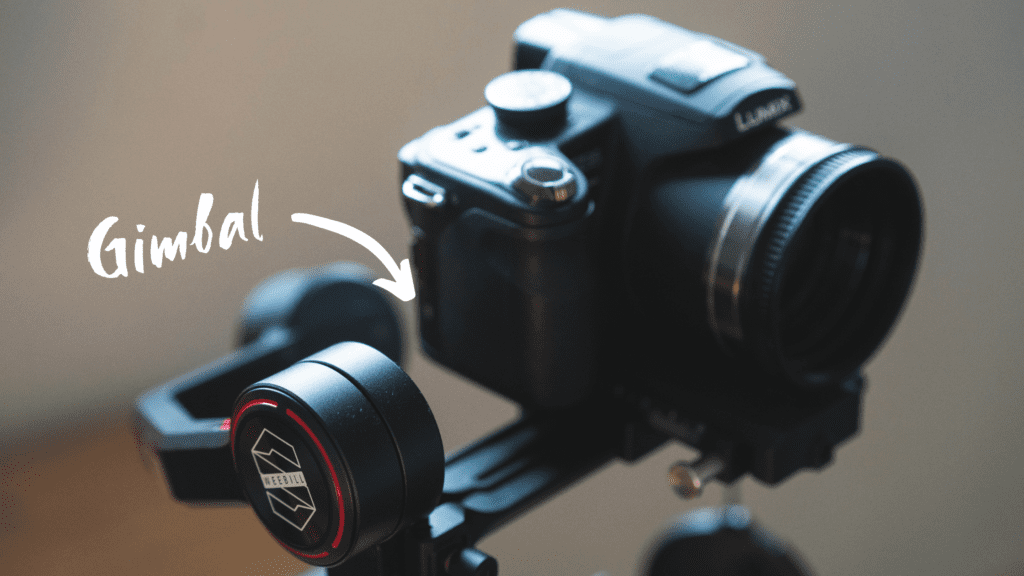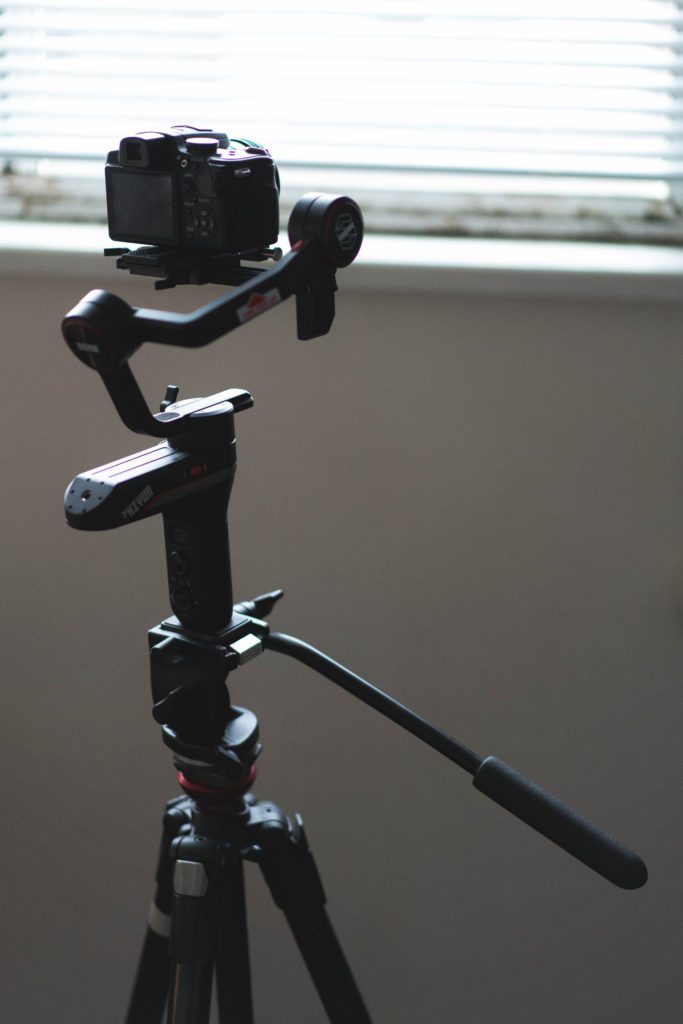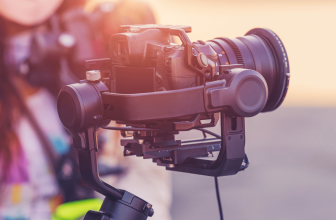Entering the world of photography and videography can be overwhelming. Confusing terminology is often thrown around freely — with little consideration for newbies.
This confusion is only made worse by the fact that the world of camera tech is full of gadgets that seem to be designed for either the same or very similar purposes. One example of this is tripods and gimbals.
So, in this article, we will first define the difference between tripods and gimbals, before helping you figure out which is best for you and your creative endeavours.
The key difference between tripods and gimbals is that a tripod is typically meant to hold your camera in one place, with minimal options for movement, whereas gimbals allow for a camera to be moved around more freely, and in any direction.
Now that we have established the basic differences between a tripod and a gimbal, let us go into more detail and examine the use cases for both tripods and gimbals, as well as which one may be best suited for your particular needs.
What Is A Tripod?
In photography and videography, a tripod is defined as “a three-legged stand for supporting a camera or other apparatus.”
Tripods are often made from plastic and metal and do not usually contain any electrical components.
Tripods can also differ greatly in design. While large tripods usually incorporate long rigid legs which are designed to collapse for transportation, small tripods sometimes have bendable legs, allowing them to be attached to furniture, fences, etc.
Tripods can range wildly in price, depending on materials, build quality, and brand.

What Is A Gimbal?
Gimbals are defined as “a mechanism, typically consisting of rings pivoted at right angles, for keeping an instrument such as a compass or chronometer horizontal in a moving vessel or aircraft.”
They are also used in photography and video.
Camera gimbals use gravity and weight to balance a camera in such a way that allows it to move freely in (often) any direction.
Gimbals are typically made from plastic and metal and, depending on the gimbal, may contain electrical components such as servo motors.
Gimbals come in all shapes and sizes, depending on their intended use. Photography gimbals are more simplistic and are meant to be placed on a tripod, while video gimbals are often much more complex and designed to be carried or attached to a drone.
Gimbals can also range wildly in price, depending on materials, build quality, and brand.

What Are Tripods Used For?
Tripods are typically used for either photography or videography — often proving very useful in either medium.
Photography
In photography, long exposure photography requires a very still camera. If the camera moves at all while the shutter is open during a long exposure photograph, the final image will likely be blurry.
This is where tripods come in handy. While it is certainly possible to keep your camera still without a tripod (perhaps by resting it on a ledge), a tripod makes this process much easier.
A tripod allows a photographer to take a long exposure photograph in almost any location while ensuring the camera stays still.
Videography
In videography, it is often necessary to keep the camera still while filming. Or it may be necessary to pan smoothly from side to side, or up and down.
This is where tripods become useful.
One scenario where a stationary tripod may be useful would be for a reporter on a street corner doing a newscast in front of a camera.
One scenario where a simple panning shot may be useful is an establishing shot in a movie — think a wide landscape or a tall skyscraper.
While in photography, a shaky camera can produce an unusable, blurry photograph, shaky video footage is often still “technically” usable — it just tends to look less professional.
Tripods help ensure the camera stays nice and still while shooting or panning. This can help produce a more professional and cleaner-looking shot.
Something else worth noting is that sometimes video equipment is simply too heavy or cumbersome to hold for long periods of time. Tripods also help to hold these heavy loads.
What Are Gimbals Used For?
Photography
In photography with long, heavy lenses, such as wildlife or sports photography, it can be difficult to hold a camera upright for long periods of time. In these genres of photography, it is also crucial to be ready to shoot at any moment.
This is where analog photography gimbals come in handy. They can be attached to the head of a tripod in order to take the strain off of the photographer, who then has the freedom to swivel quickly into place, should a subject appear.
Videography
In videography, a common problem is avoiding camera shake or jitter when moving around. This can make the footage look less professional.
Motorized gimbals are used in videography to keep the footage smooth and buttery while the camera operator moves around with the camera.
One commonly seen use of gimbals in creative filmmaking is the tracking shot in which a subject is followed around from behind.
This is a technique you will see used commonly in many films (think The Shining!).
When Should You Use Tripod?
There are no hard and fast rules as to when you should use a tripod.
In photography, the use cases are fairly straightforward: use one when you want a longer exposure.
In creative filmmaking, it is up to you to decide what shots should include lots of movement and which shots require perfect stillness. Put on your filmmaker hat and consider if using a tripod will help better tell your story.
That said, it is common to see tripods employed frequently for certain uses.
These could include the aforementioned establishing shots in a movie.
Other times to use a tripod could include filming yourself — perhaps for a YouTube video.
Keep in mind that good tripods can be expensive. For new filmmakers, there are plenty of cheap or free alternatives. Sometimes the simplest solution to achieve still video footage is just to set your camera on a table or chair.
Read Also: Buying A Used Gimbal: The Pros, Cons, and Potential Risks
When Should You Use A Gimbal?
Like a tripod, there are no hard-and-fast rules as to when you should use a gimbal.
Gimbals are great tools for achieving smooth footage. So, if you are looking for ways to increase the production value of your next project, then consider a gimbal.
While not inexpensive, gimbals can be purchased both new and used for a few hundred dollars. At that price, they may be the most affordable method for upping your next film’s production value.
Can You Use A Tripod And Gimbal Together?

As previously mentioned it is possible to use a tripod and gimbal together.
Photography gimbals are actually designed to be used with a tripod.
While video gimbals do not need to be used with a tripod, it is possible to do so.
Most gimbals will have the correct hardware to screw onto the top of a tripod.
Some gimbals can be controlled remotely from an app. So once attached together, this is likely the way you would want to use your gimbal with a tripod.
Using this setup allows you to achieve very smooth panning footage with your gimbal while capitalizing on the height of the tripod.
Which One Should You Choose?
So, now that you know the difference between a tripod and a gimbal, which one should you use?
Simply put, if you are looking to do long exposure photography or capture simple video footage with little movement, choose a tripod.
If you are looking to do wildlife or sports photography with a long, heavy lens, or capture smooth, buttery video footage with lots of movement, choose a gimbal.
Happy shooting!






[…] Read More: Tripods & Gimbals: What’s The Difference? […]